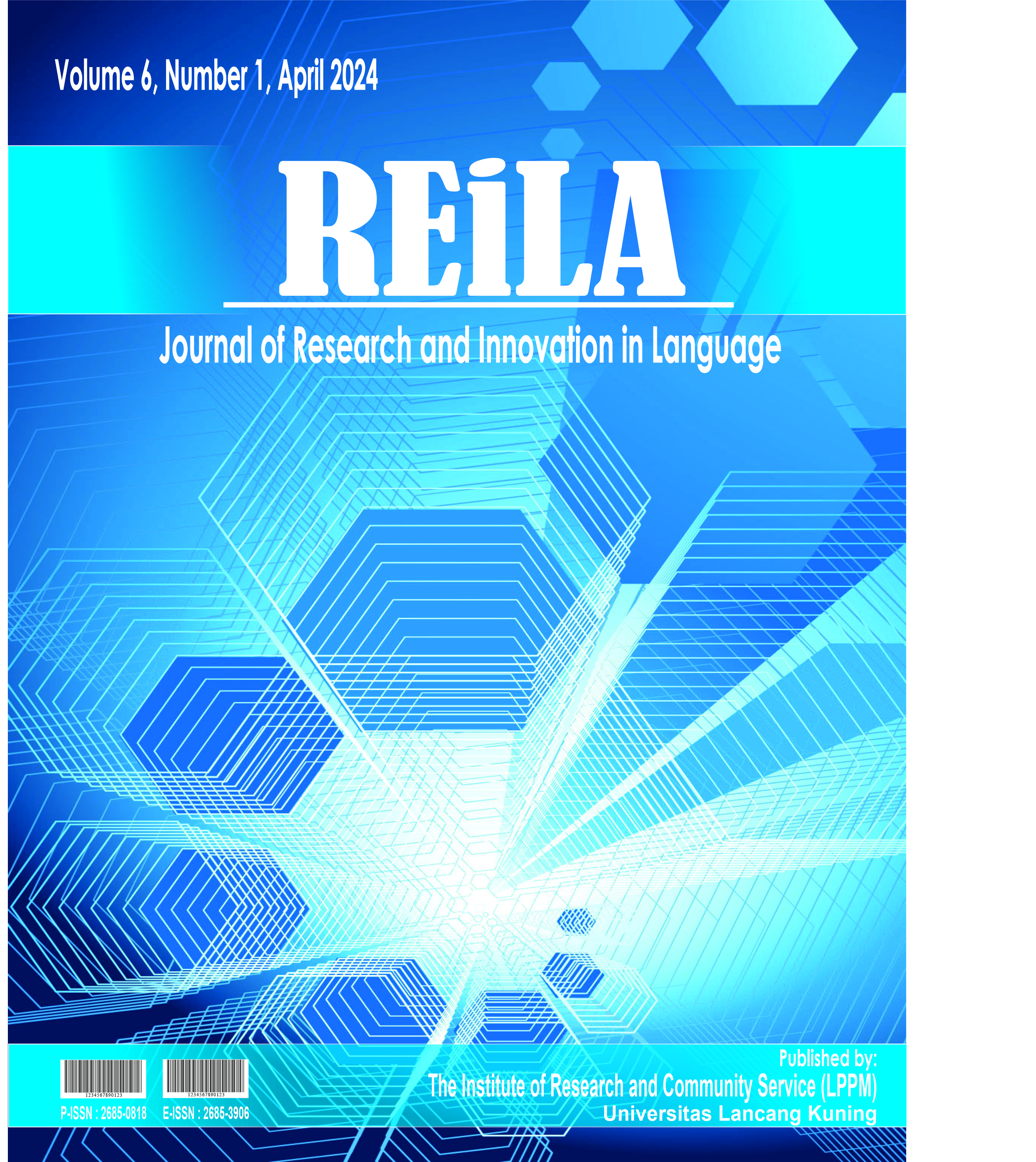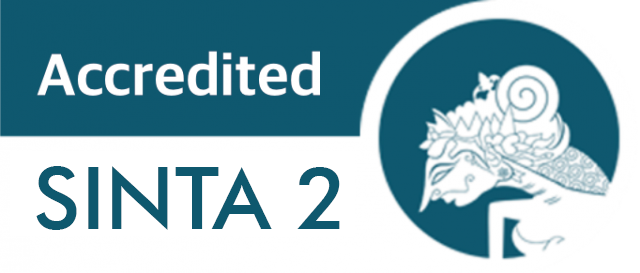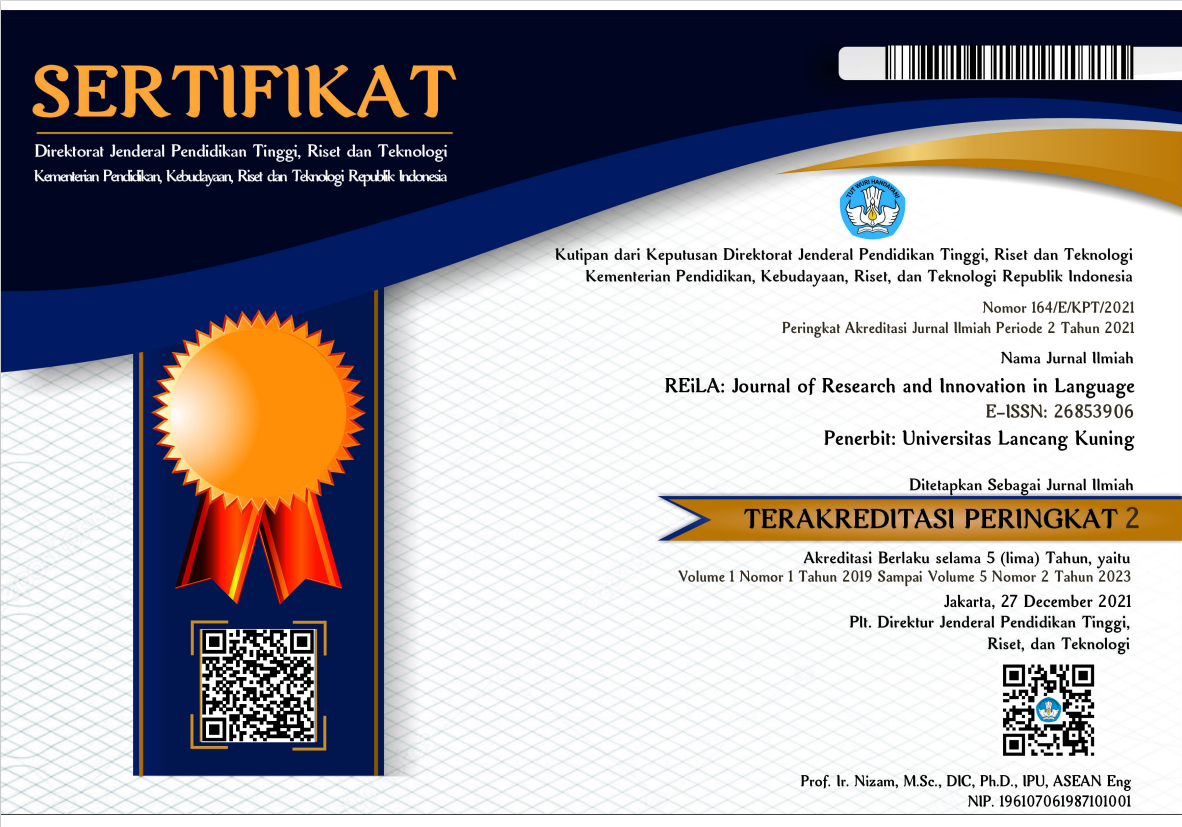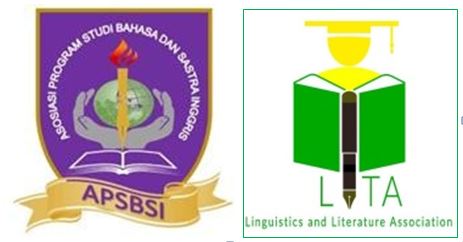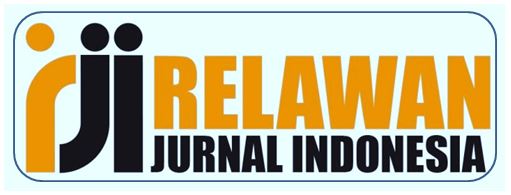Beyond Forced Migration: The Narrative Communication in the Resilience of Cipaku's Displaced Communities
Abstract
This qualitative study explores the resilience of Cipaku's displaced communities through narrative communication, shedding light on the unique sociolinguistic dynamics of development-induced displacement. Anchored in the Communication Theory of Resilience (CTR), it delves into how displaced individuals employ communicative processes. The study focused on interviews with 12 individuals selected using snowball sampling technique from Cipaku Village who have lived through displacement more than 10 years due to forced migration, and supported with field observation to gain documentation in capturing their memories and subsequent positive adaptations. Data was analyzed using the NVivo 12 Plus software, which facilitated the organization, coding, and thematic analysis relevant to the study's objectives. The findings of this research delves into how displaced individuals employ communicative processes; crafting normalcy, affirming identity, maintaining networks, employing alternative logics, and foregrounding positive actions to navigate the upheavals of displacement. It highlights how displaced populations actively reconstruct their social realities, preserve cultural identities, and sustain community cohesion through narrative communication. This study also points to gaps in understanding the erosion of linguistic diversity within displaced communities and recommends further exploration of digital communication's role in sustaining displaced communities' communicative networks.
Downloads
References
Adserà, A. and Pytlíková, M. (2015). The role of language in shaping international migration. The Economic Journal, 125(586), F49-F81. https://doi.org/10.1111/ecoj.12231
Afifi, T. D. (2018). Individual/relational resilience. Journal of Applied Communication Research, 46(1), 5–9. https://doi.org/10.1080/00909882.2018.1426707
Afifi, T. D., Merrill, A. F., & Davis, S. (2016). The theory of resilience and relational load. Personal Relationships, 23(4), 663–683. https://doi.org/10.1111/pere.12159
Agarwal, V., & Buzzanell, P. M. (2015). Communicative reconstruction of resilience labor: Identity/identification in disaster-relief workers. Journal of Applied Communication Research, 43(4), 408–428. https://doi.org/10.1080/00909882.2015.1083602
Agrawal, A., & Redford, K. (2009). Conservation and displacement: An overview. Conservation and Society, 7(1), 1–10. https://doi.org/10.4103/0972-4923.54790
Anguelovski, I., Irazábal-Zurita, C., & Connolly, J. (2018). Grabbed urban landscapes: Socio‐spatial tensions in green infrastructure planning in medellín. International Journal of Urban and Regional Research, 43(1), 133-156. https://doi.org/10.1111/1468-2427.12725
Ansah, G. (2021). Negotiating linguistic disruptions and connections in migratory contexts: language practices among child migrants in an urban market in ghana. Journal of Linguistic Anthropology, 32(1), 200-221. https://doi.org/10.1111/jola.12346
Avraamidou, L. and Osborne, J. (2009). The role of narrative in communicating science. International Journal of Science Education, 31(12), 1683-1707. https://doi.org/10.1080/09500690802380695
Baxter, J. (2018). ‘keep strong, remember everything you have learnt’: constructing support and solidarity through online interaction within a uk cancer support group. Discourse & Society, 29(4), 363-379. https://doi.org/10.1177/0957926518754414
Bowe, M., Wakefield, J., Këllezi, B., Stevenson, C., McNamara, N., Jones, B., … & Heym, N. (2021). The mental health benefits of community helping during crisis: coordinated helping, community identification and sense of unity during the covid‐19 pandemic. Journal of Community & Applied Social Psychology, 32(3), 521-535. https://doi.org/10.1002/casp.2520
Brabec, E. and Chilton, E. (2015). Toward an ecology of cultural heritage. Change Over Time, 5(2), 266-285. https://doi.org/10.1353/cot.2015.0021
Breidahl, K., Holtug, N., & Kongshøj, K. (2017). Do shared values promote social cohesion? if so, which? evidence from denmark. European Political Science Review, 10(1), 97-118. https://doi.org/10.1017/s1755773916000266
Brock, P. (2023). Accelerating and enhancing the generation of socioeconomic data to inform forced displacement policy and response. Data & Policy, 5. https://doi.org/10.1017/dap.2023.47
Brown, K. (2016). Resilience, development and global change. In Resilience, development and global change. Routledge Taylor & Francis Group. https://doi.org/10.4324/9780203498095
Buzzanell, P. (2010). Resilience: Talking, resisting, and imagining new normalcies into being. Journal of Communication, 60(1), 1-14. https://doi.org/10.1111/j.14602466.2009.01469.x
Buzzanell, P. M. (2018). Organizing resilience as adaptive-transformational tensions. Journal of Applied Communication Research, 46(1), 14–18. https://doi.org/10.1080/00909882.2018.1426711
Buzzanell, P. M., & Houston, J. B. (2018). Communication and resilience: Multilevel applications and insights. Journal of Applied Communication Research, 46(1), 1–4.
Catalani, A. (2019). Refugee artists and memories of displacement: a visual semiotics analysis. Visual Communication, 20(2), 184-208. https://doi.org/10.1177/1470357219859042
Cohen, F. (2022). Cultural idioms of distress among displaced populations: A scoping review. International Journal of Social Psychiatry, 69(1), 5-13. https://doi.org/10.1177/00207640221114742
Davidson, M. (2008). Spoiled mixture: where does state-led `positive' gentrification end?. Urban Studies, 45(12), 2385-2405. https://doi.org/10.1177/0042098008097105
Dutta, D. (2019). Communicating resilience in actual and imagined boundaries: narrative plots and meanings of retention in organizations. Journal of Applied Communication Research, 47(4), 401–419. https://doi.org/10.1080/00909882.2019.1658888
Dweik, B. (2020). Heritage language and cultural preservation among the nomadic turkmen of jordan: a sociolinguistic study. International Journal of Arabic-English Studies, 20(1), 227-242. https://doi.org/10.33806/ijaes2000.20.1.12
Eduardo, L., & Murcia, P. (2019). ‘The sweet memories of home have gone’: displaced people searching for home in a liminal space. Journal of Ethnic and Migration Studies, 45(9), 1515–1531. https://doi.org/10.1080/1369183X.2018.1491299
Ehala, M. (2010). Refining the notion of ethnolinguistic vitality. International Journal of Multilingualism, 7(4), 363-378. https://doi.org/10.1080/14790711003637094
Fatorić, S. and Seekamp, E. (2017). Securing the future of cultural heritage by identifying barriers to and strategizing solutions for preservation under changing climate conditions. Sustainability, 9(11), 2143. https://doi.org/10.3390/su9112143
Folke, C. (2006). Resilience: The emergence of a perspective for social-ecological systems analyses. Global Environmental Change, 16(3), 253–267. https://doi.org/10.1016/j.gloenvcha.2006.04.002
Fotaki, M. (2021). Solidarity in crisis? Community responses to refugees and forced migrants in the Greek islands. Organization, 29(2), 295-323. https://doi.org/10.1177/13505084211051048
Houston, J. (2018). Community resilience and communication: dynamic interconnections between and among individuals, families, and organizations. Journal of Applied Communication Research, 46(1), 19–22. https://doi.org/10.1080/00909882.2018.1426704
Johnels, J., Hagberg, B., Gillberg, C., & Miniscalco, C. (2013). Narrative retelling in children with neurodevelopmental disorders: is there a role for nonverbal temporal‐sequencing skills?. Scandinavian Journal of Psychology, 54(5), 376-385. https://doi.org/10.1111/sjop.12067
Landry, R. and Allard, R. (1994). Diglossia, ethnolinguistic vitality, and language behavior. International Journal of the Sociology of Language, 108(1). https://doi.org/10.1515/ijsl.1994.108.15
Landry, R. and Bourhis, R. (1997). Linguistic landscape and ethnolinguistic vitality. Journal of Language and Social Psychology, 16(1), 23-49. https://doi.org/10.1177/0261927x970161002
Lillie, H. M., Chernichky-Karcher, S., & Venetis, M. K. (2021). Dyadic coping and discrete emotions during COVID-19: Connecting the communication theory of resilience with relational uncertainty. Journal of Social and Personal Relationships, 38(6), 1844–1868. https://doi.org/10.1177/02654075211009302
Lillie, H., Venetis, M., & Chernichky-Karcher, S. (2023). Resilience communication mitigates the negative relational effects of topic avoidance: evidence from parental caregiving and covid‐19 pandemic contexts. Personal Relationships, 30(4), 1252-1273. https://doi.org/10.1111/pere.12508
Lucas, K., & Buzzanell, P. M. (2012). Memorable messages of hard times: Constructing short- and long-term resiliencies through family communication. Journal of Family Communication, 12(3), 189–208. https://doi.org/10.1080/15267431.2012.687196
Makmur, A., Purnama, Y., Budiman, H. G., Harsono, T. D., S, R. A., Roswandi, I., Merlina, N., & Gufron, A. (2014). Kajian nilai budaya Jatigede di Kabupaten Sumedang. Kementerian Pendidikan dan Kebudayaan, Balai Pelestarian Nilai Budaya Bandung.
Masten, A. S. (2018). Resilience Theory and Research on Children and Families: Past, Present, and Promise. Journal of Family Theory and Review, 10(1), 12–31. https://doi.org/10.1111/jftr.12255
Masten, A. S., & Obradović, J. (2006). Competence and resilience in development. Annals of the New York Academy of Sciences, 1094, 13–27. https://doi.org/10.1196/annals.1376.003
Mike Stout, & Harrist, A. W. (2021). Emerging Issues in Family and Individual Resilience Building Community and Family Resilience Research, Policy, and Programs. Springer Nature. http://www.springer.com/series/13415
Miles, M. B., Huberman, A. M., & Saldana, J. (2014). Qualitative Data Analysis A Methods Sourcebook (3rd ed.). SAGE.
Mortreux, C. and Barnett, J. (2009). Climate change, migration and adaptation in Funafuti, Tuvalu. Global Environmental Change, 19(1), 105-112. https://doi.org/10.1016/j.gloenvcha.2008.09.006
Mteki, N., Murayama, T., & Nishikizawa, S. (2017). Social impacts induced by a development project in Tanzania: a case of airport expansion. Impact Assessment and Project Appraisal, 35(4), 272–283. https://doi.org/10.1080/14615517.2017.1322806
Norbury, C. and Bishop, D. (2003). Narrative skills of children with communication impairments. International Journal of Language & Communication Disorders, 38(3), 287-313. https://doi.org/10.1080/136820310000108133
Norris, F., Stevens, S., Pfefferbaum, B., Wyche, K., & Pfefferbaum, R. (2007). Community resilience as a metaphor, theory, set of capacities, and strategy for disaster readiness. American Journal of Community Psychology, 41(1-2), 127-150. https://doi.org/10.1007/s10464-007-9156-6
Okafor, L., Khalid, U., & Burzynska, K. (2021). The effect of migration on international tourism flows: the role of linguistic networks and common languages. Journal of Travel Research, 61(4), 818-836.
Okamoto, K. E. (2020). ‘As resilient as an ironweed:’’ narrative resilience in nonprofit organizing.’ Journal of Applied Communication Research, 48(5), 618–636. https://doi.org/10.1080/00909882.2020.1820552
Pasquini, L. and Eaton, P. (2020). Being/becoming professional online: Wayfinding through networked practices and digital experiences. New Media & Society, 23(5), 939-959. https://doi.org/10.1177/1461444820902449
Raharjo, I., Ekawati, M., & Syafitri, W. (2022). Forced migration and household welfare in indonesia. Journal of Innovation in Business and Economics, 6(01), 27-36. https://doi.org/10.22219/jibe.v6i01.20787
Ramirez, L. and Hammack, P. (2014). Surviving colonization and the quest for healing: Narrative and resilience among california indian tribal leaders. Transcultural Psychiatry, 51(1), 112-133. https://doi.org/10.1177/1363461513520096
Riera-Gil, E. (2018). The communicative value of local languages: an underestimated interest in theories of linguistic justice. Ethnicities, 19(1), 174-199. https://doi.org/10.1177/1468796818786310
Ross, M. S., Huff, J. L., & Godwin, A. (2021). Resilient engineering identity development critical to prolonged engagement of black women in engineering. Journal of Engineering Education, 110(1), 92–113. https://doi.org/10.1002/jee.20374
Scharp, K. M., Geary, D. E., Wolfe, B. H., Wang, T. R., & Fesenmaier, M. A. (2021). Understanding the triggers and communicative processes that constitute resilience in the context of migration to the United States. Communication Monographs, 88(4), 395–417. https://doi.org/10.1080/03637751.2020.1856395
Scharp, K. M., Kubler, K. F., & Wang, T. R. (2020). Individual and community practices for constructing communicative resilience: exploring the communicative processes of coping with parental alienation. Journal of Applied Communication Research, 48(2), 207–226. https://doi.org/10.1080/00909882.2020.1734225
Shaw, K. and Hagemans, I. (2015). ‘gentrification without displacement' and the consequent loss of place: the effects of class transition on low‐income residents of secure housing in gentrifying areas. International Journal of Urban and Regional Research, 39(2), 323-341. https://doi.org/10.1111/1468-2427.12164
Side, K. (2014). Visual and textual narratives of conflict-related displacement in Northern Ireland. Identities, 22(4), 486-507. https://doi.org/10.1080/1070289x.2014.956746
Simpson, T. (2019). Remediating Sunset park: environmental injustice, danger, and gentrification. The Journal of Public Space, 4(4), 187-210. https://doi.org/10.32891/jps.v4i4.1242
Siriwardhana, C., Ali, S., Roberts, B., & Stewart, R. (2014). A systematic review of resilience and mental health outcomes of conflict-driven adult forced migrants. Conflict and Health, 8(1). https://doi.org/10.1186/1752-1505-8-13
Venetis, M. K., Chernichky-karcher, S. M., Lillie, H. M., Venetis, M. K., Chernichky-karcher, S. M., & Lillie, H. M. (2020). Communicating resilience : predictors and outcomes of dyadic communication resilience processes among both cancer patients and cancer partners. Journal of Applied Communication Research, 48:1, 49-69, https://doi.org/10.1080/00909882.2019.1706098
Vine, M. and Greenwood, R. (2023). Cross-group friendship and collective action in community solidarity initiatives with displaced people and resident/nationals. Frontiers in Psychology, 14. 1042577. https://doi.org/10.3389/fpsyg.2023.1042577
Wells, R., Lawsin, C., Hunt, C., Youssef, O., Abujado, F., & Steel, Z. (2018). An ecological model of adaptation to displacement: individual, cultural and community factors affecting psychosocial adjustment among syrian refugees in jordan. Global Mental Health. 5, e42. https://doi.org/10.1017/gmh.2018.30
Widyaningsih, A. and Broeck, P. (2021). Social innovation in times of flood and eviction crisis: the making and unmaking of homes in the ciliwung riverbank, jakarta. Singapore Journal of Tropical Geography, 42(2), 325-345. https://doi.org/10.1111/sjtg.12370
Wilson, S. R., Kuang, K., Hintz, E. A., & Buzzanell, P. M. (2021). Developing and Validating the Communication Resilience Processes Scale. Journal of Communication, 71(3), 478–513. https://doi.org/10.1093/joc/jqab013
Yeo, H., Choi, Y., Son, E., Cho, H., Yun, S., & Lee, J. (2021). Childhood community risk factors on intimate partner violence perpetration and victimization among college students. Journal of Interpersonal Violence, 37(21-22), NP20361-NP20385. https://doi.org/10.1177/08862605211050097
Yi, Y., Cho, S., & Jang, J. (2022). Methodological innovations in examining digital literacies in applied linguistics research. Tesol Quarterly, 56(3), 1052-1062. https://doi.org/10.1002/tesq.3140
Yoshino, N., Paul, S., Sarma, V., & Lakhia, S. (2018). Land acquisition and infrastructure development through land trust laws: A policy framework for Asia. 854. Asian Development Bank Institute (ADBI), Tokyo
Zwisler, J. (2021). Linguistic genocide or linguicide?: A discussion of terminology in forced language loss. Apples: Journal of Applied Language Studies, 15(2). 43-47. https://doi.org/10.47862/apples.103419

